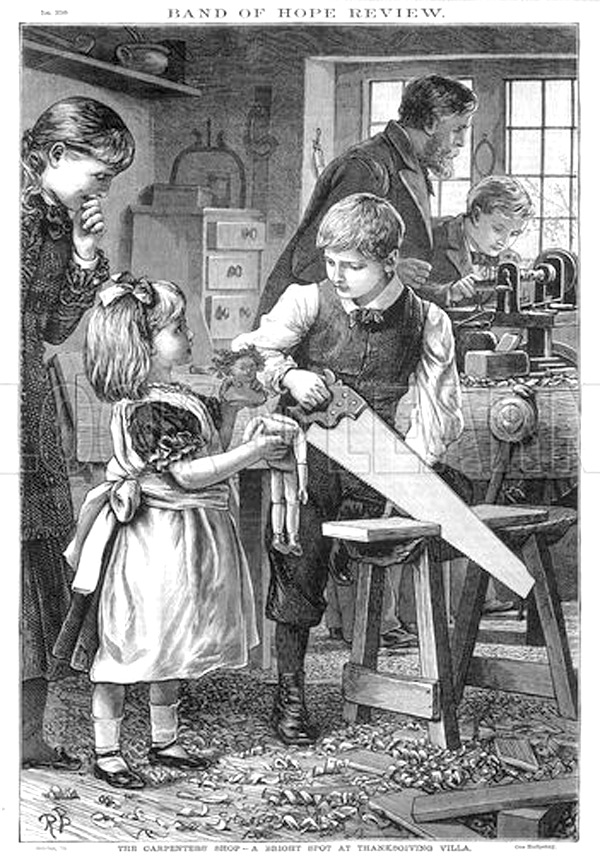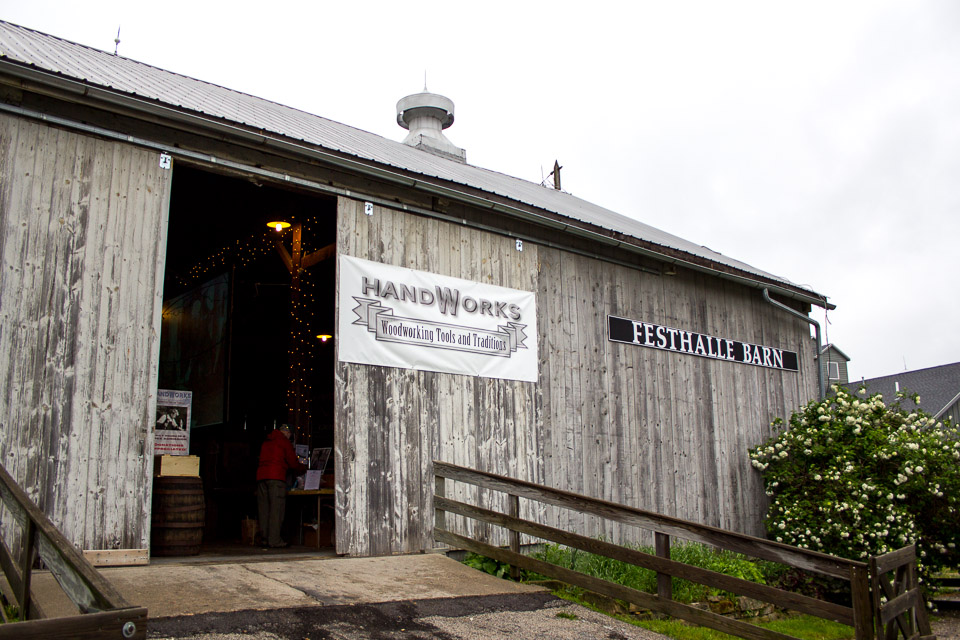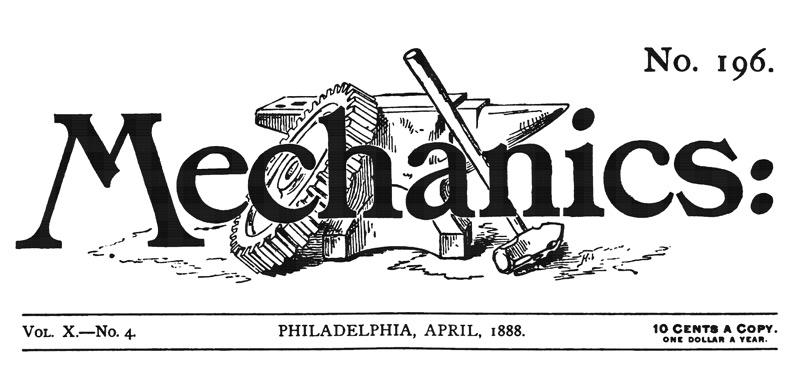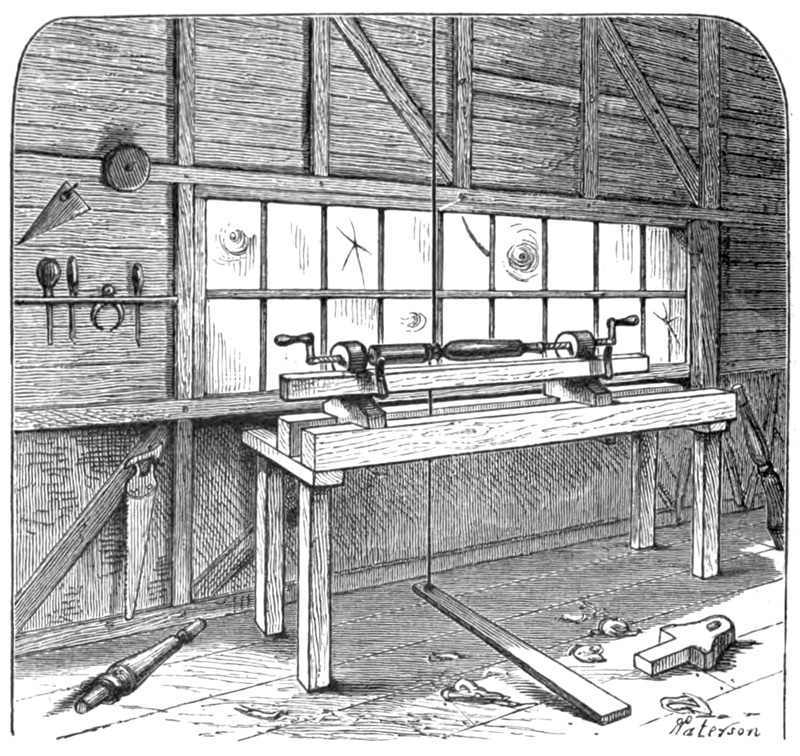 267. A mallet should be made of some very hard wood, and, if it be not made of a knot, the ends of it should be banded, like the beetle, to keep it from splitting. That part of a tree, if it be tough wood, which grows just above the surface of the ground, what is called the crook, will make the very best mallets, which will require no hooping. I have a mallet which was made of the crook of a part of a white ash stump, which has been the only mallet in use, for framing all my buildings, and doing all my shop work, for sixteen years, and it is not half worn out, as yet.
267. A mallet should be made of some very hard wood, and, if it be not made of a knot, the ends of it should be banded, like the beetle, to keep it from splitting. That part of a tree, if it be tough wood, which grows just above the surface of the ground, what is called the crook, will make the very best mallets, which will require no hooping. I have a mallet which was made of the crook of a part of a white ash stump, which has been the only mallet in use, for framing all my buildings, and doing all my shop work, for sixteen years, and it is not half worn out, as yet.
A mallet should be turned out true, with the ends convex, or rounding, not less than half an inch from edge to edge. The handle should be put in true, so that the faces will be parallel with the handle, as shown in the fig. 104. Let it be well oiled to prevent its cracking. Never allow the faces of the mallet to be bruised, and dented on iron bolts and such like, but keep it smooth for pounding on chisel handles only. A tough piece of apple wood will make about as good a mallet as almost any other kind of wood. But if it is made of a round piece of wood, on account of its great liability to check, it should be treated as recommended for
Beetles.
268. Figure 104 represents a farmer’s beetle made in a workmanlike manner. Beetles should always be turned true, and the handle turned of an oval form (see Sledge Hammer), and put in very true, so that a line cutting the center of the handle will be exactly parallel with lines continued square across the ends or faces of the beetle, as shown by the dotted lines figure 104. The beetle should hang as nearly like the sledge hammer as possible, and the reader can refer to that paragraph for the information which seems to be lacking in this place.
(more…)




